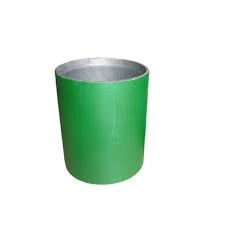- Afrikaans
- Albanian
- Amharic
- Arabic
- Armenian
- Azerbaijani
- Basque
- Belarusian
- Bengali
- Bosnian
- Bulgarian
- Catalan
- Cebuano
- Corsican
- Croatian
- Czech
- Danish
- Dutch
- English
- Esperanto
- Estonian
- Finnish
- French
- Frisian
- Galician
- Georgian
- German
- Greek
- Gujarati
- Haitian Creole
- hausa
- hawaiian
- Hebrew
- Hindi
- Miao
- Hungarian
- Icelandic
- igbo
- Indonesian
- irish
- Italian
- Japanese
- Javanese
- Kannada
- kazakh
- Khmer
- Rwandese
- Korean
- Kurdish
- Kyrgyz
- Lao
- Latin
- Latvian
- Lithuanian
- Luxembourgish
- Macedonian
- Malgashi
- Malay
- Malayalam
- Maltese
- Maori
- Marathi
- Mongolian
- Myanmar
- Nepali
- Norwegian
- Norwegian
- Occitan
- Pashto
- Persian
- Polish
- Portuguese
- Punjabi
- Romanian
- Russian
- Samoan
- Scottish Gaelic
- Serbian
- Sesotho
- Shona
- Sindhi
- Sinhala
- Slovak
- Slovenian
- Somali
- Spanish
- Sundanese
- Swahili
- Swedish
- Tagalog
- Tajik
- Tamil
- Tatar
- Telugu
- Thai
- Turkish
- Turkmen
- Ukrainian
- Urdu
- Uighur
- Uzbek
- Vietnamese
- Welsh
- Bantu
- Yiddish
- Yoruba
- Zulu
Coupling Solutions for Tubing Systems Optimization and Performance Enhancement
Coupling for Tubing Essential Connections for Pipe Systems
In the world of pipelines and tubing, the significance of couplings cannot be overstated. These fittings, which connect two lengths of pipe or tube together, play an essential role in the integrity, functionality, and efficiency of various systems, from residential plumbing to industrial applications. As industries evolve and advanced materials are developed, the design and functionality of couplings for tubing must also adapt to meet new demands.
Understanding Couplings
A coupling is a device used to connect two piping sections, enabling the flow of fluids or gases from one segment to another. Couplings come in various designs, materials, and sizes, tailored to accommodate the specific requirements of different applications. Typically, couplings can be classified into two main categories permanent and temporary. Permanent couplings, which are often welded or soldered, are used in systems where leaks must be eliminated at all costs. In contrast, temporary couplings can be easily assembled and disassembled, making them ideal for maintenance and repair operations.
Types of Couplings
1. Screw or Threaded Couplings These involve threading the ends of the tubing, which allows the two pieces to be easily connected and disconnected. While practical for installations requiring frequent repairs, they can be prone to leaks if not correctly tightened.
2. Flanged Couplings These use a pair of flanges that are bolted together to create a secure connection. They're commonly utilized in larger piping systems, particularly for high-pressure applications where a robust connection is necessary.
3. Socket Weld Couplings This type allows for the tubing to be inserted into a socket fitting, which is then welded in place. Socket welds provide a strong connection and are often found in high-pressure and high-temperature environments.
4. Compression Couplings These are designed to connect pipes without welding or threading, relying instead on compressing the tubing into the fitting. They are simple to install and are widely used in residential plumbing.
coupling for tubing

The Importance of Material Selection
Choosing the right material for couplings is crucial. Couplings are available in various materials including metals like stainless steel, carbon steel, and brass, as well as plastic options such as PVC and HDPE. The choice of material is influenced by factors like the type of fluid being transported, pressure conditions, temperature ranges, and environmental exposure. For instance, stainless steel couplings are favored for their corrosion resistance and strength, making them suitable for industrial applications, while PVC couplings are often chosen for residential plumbing due to their cost-effectiveness and ease of installation.
Performance and Maintenance
The performance of a coupling system is directly linked to its ability to maintain a seal under various conditions. Leaks can lead to costly repairs and environmental hazards, which is why regular maintenance is essential. Inspections should focus on signs of wear, corrosion, or misalignment. If a coupling appears compromised, it should be repaired or replaced promptly to ensure system integrity.
Innovations in Coupling Technology
As technology advances, so do coupling designs. Current trends include the development of expandable couplings that can adapt to varying tubing sizes, and smart couplings equipped with sensors to monitor conditions like pressure and temperature in real-time. These innovations provide engineers with the tools needed to enhance system performance and longevity, ultimately leading to safer and more efficient pipelines.
Conclusion
Couplings for tubing are often the unsung heroes of plumbing and pipeline systems. Their ability to create secure connections is vital for functionality and safety. Understanding the different types, materials, and maintenance needs of couplings allows engineers and technicians to make informed decisions, enhancing the performance of the entire system. As industries continue to evolve, the role of couplings will undoubtedly grow, spearheading innovations that will improve connectivity and reduce risks across various applications.
-
Tubing Pup Joints: Essential Components for Oil and Gas OperationsNewsJul.10,2025
-
Pup Joints: Essential Components for Reliable Drilling OperationsNewsJul.10,2025
-
Pipe Couplings: Connecting Your World EfficientlyNewsJul.10,2025
-
Mastering Oilfield Operations with Quality Tubing and CasingNewsJul.10,2025
-
High-Quality Casing Couplings for Every NeedNewsJul.10,2025
-
Boost Your Drilling Efficiency with Premium Crossover Tools & Seating NipplesNewsJul.10,2025







